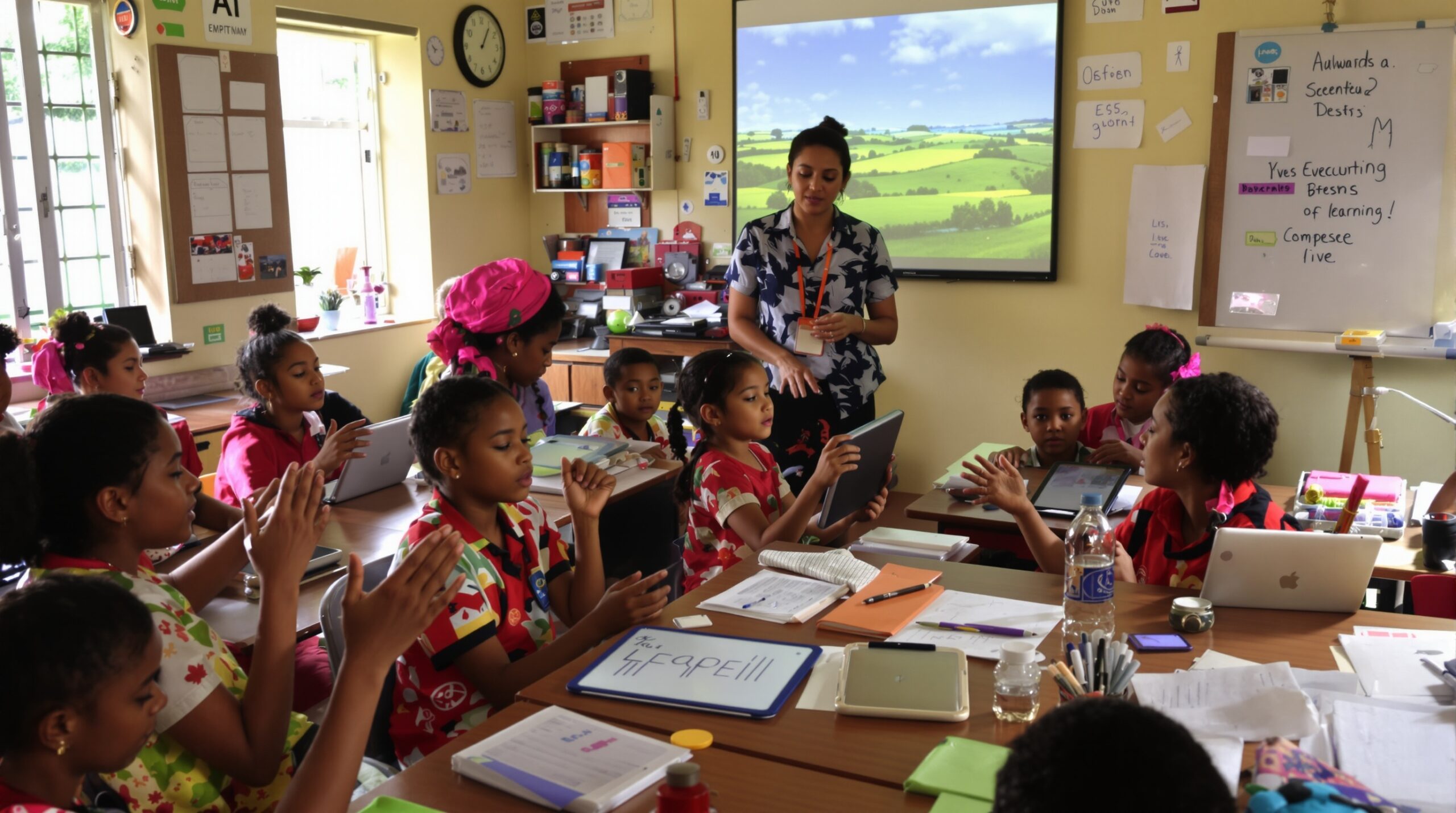Artificial intelligence (AI) is dramatically reshaping rural education systems across the globe. Its influence can be seen from Africa to Asia and beyond. As technology develops, rural communities access new educational opportunities that were previously unimaginable. AI-driven tools bridge gaps caused by limited resources and geographical isolation.
Expanding Access to Quality Instruction
AI-powered platforms provide personalized learning experiences for students in remote areas. Digital classrooms equip rural learners with the same high-quality materials available to urban peers. Students access instructional videos, interactive exercises, and tailored lessons, all designed to match their abilities.
Whereas rural schools often face shortages of qualified teachers, AI tutors fill these gaps effectively. Programs like Squirrel AI in China and M-Shule in Kenya use adaptive technologies to meet students’ unique needs. Learners can clarify doubts instantly and progress at their own pace using these intelligent systems.
Improving Teacher Support and Professional Development
Rural educators benefit from AI tools that assist with lesson planning and classroom management. These resources reduce educators’ administrative tasks, allowing them more time for direct instruction. Teachers receive data-driven feedback on student performance, helping them adjust teaching methods promptly.
AI facilitates remote professional development opportunities for rural teachers. Online workshops, virtual mentoring, and AI-generated resources keep educators updated on best practices. This is vital in regions where access to conventional training remains limited.
Language Translation and Multilingual Learning
In many rural parts of the world, language barriers hinder effective learning. AI breaks down these barriers through real-time translation tools and localized content. For instance, Google’s AI-powered Translate app allows students to access educational materials in their native languages.
Moreover, AI can help document endangered local dialects, preserving linguistic diversity while ensuring inclusivity. Children in multilingual communities are now able to learn seamlessly, no matter their first language. This enhances both understanding and engagement within the classroom.
Optimizing Resource Allocation and School Management
AI supports better allocation of educational resources in rural communities. Through data analysis, administrators can identify which regions or schools need books, supplies, or additional staff. This data-centric planning ensures fewer students fall through the cracks.
AI-based management tools automate processes like student registration, attendance tracking, and performance analytics. These automation systems reduce the administrative workload for overburdened rural school staff. As a result, schools operate more efficiently and focus on academic improvement.
Strengthening Student Assessment and Support
AI-driven systems enable real-time assessment and feedback for rural students. Teachers instantly receive data highlighting strengths and weaknesses, enabling targeted interventions. Early detection of learning difficulties helps educators address problems before they escalate.
AI-powered chatbots and mental health apps provide emotional support for students in isolated areas. Children can discuss concerns or seek guidance confidentially, even if counselors are unavailable. Stronger emotional support leads to better academic performance and higher retention.
Bridging the Digital Divide Through Innovative Partnerships
Many rural communities still struggle with internet access and digital devices. Governments, NGOs, and private companies partner to address these issues collectively. AI solutions like offline learning apps deliver content without requiring constant connectivity, benefiting learners in areas with unreliable internet.
Projects supported by organizations such as UNESCO, Microsoft, and the Gates Foundation supply eco-friendly tablets and solar-powered internet hubs. These improvements help rural students access AI-powered educational tools and foster digital literacy. By working together, stakeholders close the technology gap step by step.
Encouraging Community Engagement and Local Content Creation
Artificial intelligence empowers rural teachers and students to create culturally relevant, localized learning materials. AI-driven content creation tools help communities record oral histories and teach local traditions, crafts, and languages. This content supplements the global curriculum and nurtures a strong sense of identity.
Community members become active partners in the learning process, ensuring education remains meaningful and connected to local realities. These collaborative efforts increase community support for rural schools and sustain long-term educational improvements.
Addressing the Challenges of AI in Rural Education
Despite significant progress, rural AI adoption faces challenges. Infrastructure gaps, such as unstable electricity and internet, slow the rollout of advanced technology. Training teachers to use new AI tools requires time, ongoing support, and resources.
Equity issues also arise, as not every community accesses the same level of technology or government support. Addressing these challenges requires persistent policy efforts, investment, and creative local solutions. Stakeholders must also ensure that AI development aligns with cultural values and ethical standards.
The Future of AI in Rural Education
AI is poised to play a central role in the evolution of rural education worldwide. As costs decrease and tools become more user-friendly, even the most remote villages can benefit from cutting-edge advancements. Continuous improvement of AI systems will further personalize learning and strengthen teacher support networks.
Ongoing innovation offers hope for millions of children who have long been left behind by traditional education systems. The scaling of AI, paired with global partnerships, will drive lasting changes in rural learning. These advancements not only level the playing field but also empower rural communities to shape their future.
Conclusion
Artificial intelligence is redefining what is possible in rural education, breaking down barriers and unleashing potential. By leveraging AI-driven tools and initiatives, rural learners and educators find themselves better equipped for success. The path forward relies on continued commitment, collaboration, and careful attention to both opportunities and challenges.
As AI technology advances, it must remain inclusive, ethical, and community-centered. The transformation of rural education will shape not just individual lives, but also the health and prosperity of entire nations.

